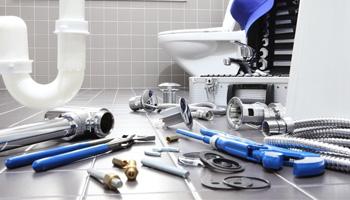Leaks can be a persistent challenge for property owners, causing damage to structures and leading to costly repairs. When it comes to leak management, one of the critical aspects is efficient leak location. This comprehensive guide aims to delve into the intricacies of leak location, providing valuable insights, techniques, and preventive measures to safeguard your property.
Understanding the Importance of Leak Location
Identifying the exact location of a leak is crucial for prompt and effective repairs. Whether it’s a residential home, commercial building, or industrial facility, leaks can occur in various places, such as roofs, plumbing systems, and foundations. Pinpointing the source accurately helps minimize damage, reducing repair costs, and preventing potential health hazards.
Common Causes of Leaks:
Before diving into leak location techniques, it’s essential to understand the common causes of leaks. Some primary culprits include:
-
Roof Issues: Damaged or missing shingles, deteriorated flashing, and clogged gutters can contribute to roof leaks.
-
Plumbing Problems: Leaky pipes, worn-out seals, and faulty appliances are common sources of water leaks in residential and commercial properties.
-
Foundation Cracks: Settlement, soil movement, and poor construction can lead to cracks in a building’s foundation, allowing water to seep through.
-
Window and Door Seals: Improperly sealed windows and doors can permit water infiltration, causing leaks during heavy rain or storms.
Effective Leak Location Techniques:
-
Visual Inspection:
Start with a thorough visual examination of the affected area. Look for water stains, mold growth, and other visible signs of leaks. Pay close attention to ceilings, walls, and floors.
-
Roof Inspection:
Examine the roof for missing or damaged shingles, deteriorated flashing, and clogged gutters. Use binoculars if necessary and look for signs of wear and tear.
-
Plumbing System Check:
Inspect plumbing fixtures, pipes, and appliances for visible leaks. A systematic check of areas prone to water damage, such as kitchens and bathrooms, is essential.
-
Technology-Assisted Methods:
Utilize modern technology, such as thermal imaging cameras and moisture meters, to detect hidden leaks. These tools can identify temperature variations and moisture levels, aiding in precise leak location.
-
Pressure Testing:
For plumbing systems, conduct pressure tests to identify leaks in pipes. An increase or drop in pressure can indicate the presence of a leak.
-
Smoke Testing:
Introduce smoke into plumbing systems to identify leaks. The smoke will escape through any openings, making it easier to pinpoint the location.
-
Dye Testing:
Add a colored dye to water sources to trace the path of leaks. This method is particularly effective in identifying the source of leaks in plumbing systems.
Preventive Measures
-
Regular Maintenance:
Implement a routine maintenance schedule for roofs, plumbing systems, and foundations. Regular inspections can help identify and address potential issues before they escalate.
-
Proper Sealing:
Ensure that windows, doors, and other openings are properly sealed to prevent water infiltration. Replace worn-out seals promptly.
-
Gutter Maintenance:
Keep gutters clean and free of debris to allow proper water drainage from the roof. Clogged gutters can lead to water pooling and roof leaks.
-
Landscaping:
Proper landscaping can help prevent foundation leaks. Ensure that the ground around your property slopes away from the foundation to direct water away.
Conclusion:
Leak location is a crucial aspect of effective property maintenance. By understanding common causes, employing accurate techniques, and implementing preventive measures, property owners can minimize the impact of leaks and ensure the longevity of their structures. Regular inspections and proactive maintenance play a pivotal role in identifying and addressing leaks before they become major issues. Mastering the art of leak location is an investment in the sustainability and resilience of any property.
Our website: https://sewellplumbingtx.com/









